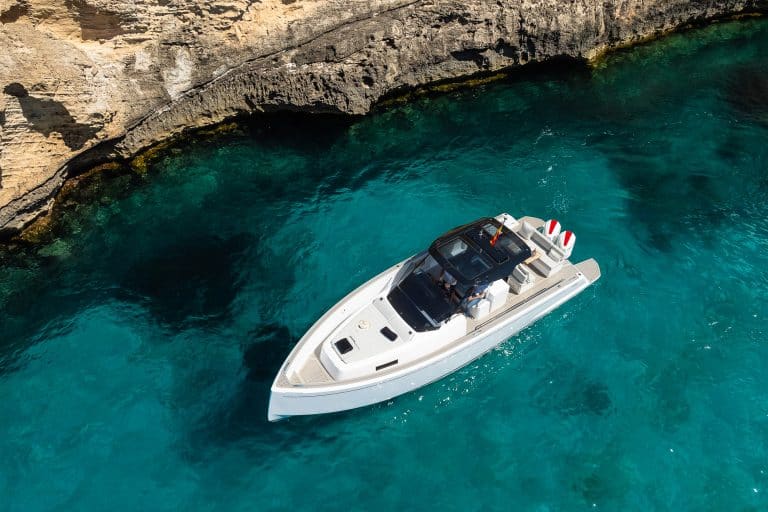Learn the essence of wind in navigation and its crucial impact on maritime safety. Learn how to accurately measure its intensity using methods such as an anemometer and the Beaufort Scale. Immerse yourself in the importance of the iconic Compass Rose for orientation and discover why this knowledge is essential for anticipating and facing challenges in unpredictable seas. With Motyvel, with over 35 years of experience in the maritime field, we invite you to sail with skill and respect for nature.
In this new post from Motyvel, we explore the essential relevance of understanding the wind when sailing and the types of winds that exist for those who love or want to venture into it. From powerful gusts descending from the Pyrenees to warm breezes blowing from the south, each wind at sea is a chapter in the history of navigation.
Let’s discover why this knowledge is crucial and how sea lovers can sail skillfully, anticipating the challenges that may present.
Why is it so important to know the types of winds for sailing?
Knowing the classes of winds is crucial for navigation for diverse reasons. Firstly, winds have a direct impact on the safety of a vessel, as they determine the direction and force with which the ship moves. By understanding wind patterns in a specific region, navigators can more easily anticipate changing weather conditions, allowing them to take preventive measures to ensure the safety of the crew and the vessel.
Additionally, knowing specific characteristics about local winds, such as the Tramontana, Mistral, or Levante, among others, allows for better decision-making and adjusting possible navigation strategies by anticipating challenging situations and avoiding potential risks during the journey. By foreseeing adverse weather conditions, such as storms, alternative routes can be chosen or strategic stops scheduled to avoid risk zones and ensure a safer and more efficient passage.
Types of Winds in Spain
In Spain, we have various types of winds that influence our navigation. Each of these possesses distinctive characteristics that sea lovers must be acquainted with to navigate safely and efficiently.
Tramontana Wind
Originating from the Pyrenees, can be powerful and fast, creating challenging conditions at sea.
Mistral Wind
Coming from the northwest, it is common in the Gulf of Lyon region. Its strength and frequency can impact navigation, requiring additional precautions.
Levante Wind
This east wind, blowing from the Mediterranean Sea, can bring changing conditions. Navigators must adapt to its characteristics, expecting gusts and variations in intensity.
Galerna Wind
Originating in the Bay of Biscay, it is sudden and violent. One must be alert, as it can arise rapidly, significantly affecting navigation.
Garbí Wind
Coming from the southwest, it can be gentle but can also intensify. Its variability demands that sailors be prepared to adjust their sails and route.
Siroco Wind
Blowing from the south, it can bring adverse conditions. Knowledge of it is vital, as it can affect visibility and comfort on board.
How to Measure Wind Intensity
Accurate measurement of wind intensity is essential for safe navigation. The methods explained below, when combined, provide sailors with a comprehensive understanding of wind conditions, allowing safe and adaptive navigation in various situations. There are two common methods for assessing wind strength:
Anemometer
This specialized instrument measures speed in knots, kilometers per hour, or meters per second. Its use on board provides real-time information about wind speed, aiding in adjusting sails and anticipating possible challenges.
Beaufort Scale
This scale classifies wind intensity into 12 degrees, from calm conditions to hurricanes. The categorization provides a visual description of wind strength, facilitating a quick understanding of conditions:
- 0. Calm. No appreciable wind.
- 1. Light Air. Perceptible movement of leaves and branches.
- 2. Light Breeze. Small branches in motion; smoke rises vertically.
- 3. Gentle Breeze. Large branches move, but do not cause discomfort.
- 4. Moderate Breeze. Moderate wave movement; flags extended.
- 5. Fresh Breeze. Small waves, with breaking crests.
- 6. Strong Breeze. Larger waves; white foam forms.
- 7. Near Gale. High waves with extended foam.
- 8. Gale. Very high waves, visibility may be reduced.
- 9. Strong Gale. Turbulent waves, navigation difficulties.
- 10. Storm. Very high waves, significant risk.
- 11. Violent Storm. Extraordinary waves, high risk.
- 12. Hurricane. Widespread damage; sea completely covered in foam.
How to Determine Wind Direction: the Compass Rose

Accurate determination of wind direction is essential for sailors, and this is where the iconic Compass Rose comes into play.
The Compass Rose is essential for navigation and other outdoor activities, providing a clear visual reference of wind direction in relation to the cardinal points. It facilitates orientation, allowing sailors and sea lovers to know the wind direction and plan their actions according to weather conditions.
This traditional graphic tool, represented as a stylized rose divided into 360 degrees, marking the cardinal points (north, south, east, and west) and their intermediates, provides information about wind directions. Each petal of the rose points to where the wind is blowing, allowing sailors to have an immediate visual reference. It is designed to be readable and understandable, with visual indicators that facilitate quick identification of wind direction. Some compass roses also incorporate additional information, such as symbols indicating magnetic variation on the compass.
Conclusion
Knowledge of different wind types and their measurement not only enhances navigation efficiency but also pays tribute to the rich nautical tradition, where harmony between man and nature is expressed through understanding and respect for the winds that propel our journeys. With each breeze and gust, the dance between the sailor and the wind becomes a symphony of skills, experiences, and above all, safety on the seas.
Concluding on the wind and its impact on navigation not only strengthens navigation but also allows sea lovers to anticipate and prepare for changing weather conditions. Accurate measurement of its intensity, through methods such as an anemometer and the Beaufort Scale, provides sailors with crucial tools to adjust their strategies in real time. Additionally, the iconic Compass Rose, with its cardinal points and orientations, becomes a visual beacon to guide the direction of voyages, emphasizing the importance of foresight and adaptation in the vast and unpredictable ocean.
At Motyvel, with our 35 years of experience in the maritime world, we hope to have helped you better understand the importance of wind in the world of navigation. If you need anything more from us, you can always find us here.








